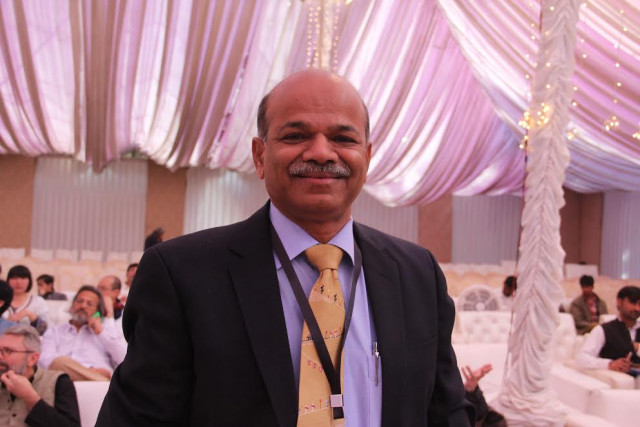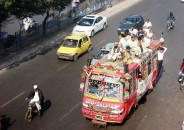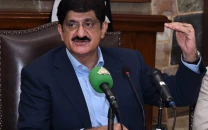Blooming gradually: Let’s talk about Harappa
Dr Vasant Shivram Shinde sheds light on sites in northwest of India

Dr Vasant Shivram Shinde sheds light on sites in northwest of India. PHOTO: EXPRESS
These facts were shared by archaeologist and Deccan College vice-chancellor Dr Vasant Shivram Shinde while commenting on the biggest archaeological site of India, Haryana province's Rakhigarhi region. Certainly, the northwest of India has been emerging as an important region in the subcontinent as there are a large number of Harrapan sites, he said. He was speaking on the third day of the international Mohen Jo Daro conference.
According to Dr Shinde, the Ghaggar basin in the northwest of India has been identified by Indian scholars as ancient Vedic Saraswati, which has seen the highest concentration of sites. He told the audience that Rakhigarhi has been protected and excavated by the archaeological survey of India. According to him, the even concentration of sites was near the two rivers, Ghaggar and Chaunta.
The fertility of land resulted in the concentration of the agricultural Harappan sites in the region due to abundance of water. According to the scholar, Rakhigarhi bloomed into a big urban centre since 5000BC and the pinnacle is around 2600BC. He added that a village of 10,000 people is still very close to the site.
"The meticulous town planning in the Harrapan Civilisation has not emerged suddenly as it has been a gradual process." He stressed it was a gradual development from the pit dwelling to the well-planned cities and settlements around 2600BC, when it was on its peak.
He believed it is high time to educate people about the basic science and technology used by the Harrapan people as it is still relevant today in South Asia and we need to preserve traditional methodology.
He said that we are going to develop Rakhigarhi into a model archaeological site along the lines of Mohen Jo Daro that tourists can visit. He added that the site has potential, which can generate a lot of revenue for the country.
He also thanked archaeologist Dr Kaleemullah Lashari and the culture, tourism and antiquities department for inviting him to give a presentation in Pakistan. "It's a great opportunity to share the information that we have been generating for many decades now," he added. "I'm [among] the few lucky Indians who have visited the archaeological sites of Mohen Jo Daro [twice]."
Published in The Express Tribune, February 12th, 2017.



















COMMENTS
Comments are moderated and generally will be posted if they are on-topic and not abusive.
For more information, please see our Comments FAQ